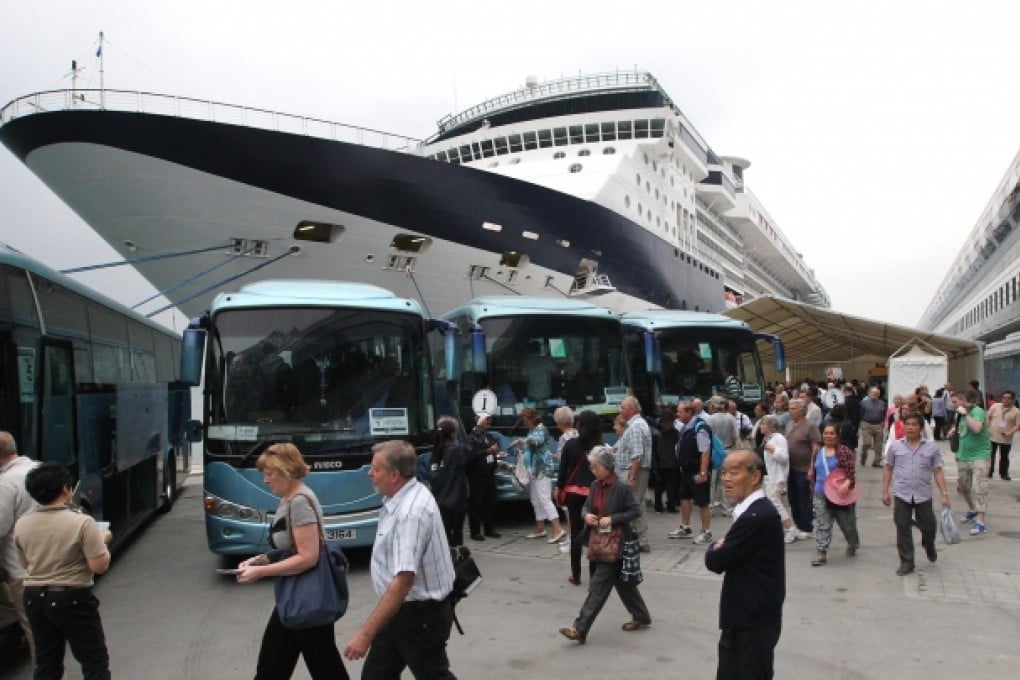Overseas passengers return to Kai Tak with official opening of HK$8.2b cruise terminal
The city's new cruise terminal is an HK$8.2b bet to revitalise east Kowloon and diversify the source of tourists visiting Hong Kong

For decades, low-flying jets approaching Kai Tak airport, thundering over the heads of residents in Kowloon City, were a unique if noisy feature of old Hong Kong.

But while the roar of low-flying jets is a thing of the past, passengers' luggage is returning to the area as it once again becomes a centre for transport and tourism .
Built at a cost of HK$8.2 billion, the Kai Tak Cruise Terminal finally welcomed its first visitors yesterday after years of planning and construction. Carrying more than 3,000 passengers and making her maiden voyage to Hong Kong, the 310-metre, 15-deck Mariner of the Seas would have been too big to berth at Ocean Terminal in Tsim Sha Tsui.
The government is pinning its hopes on the cruise terminal to boost tourism and help revitalise the eastern end of Kowloon, for which it has ambitious plans.
But questions remain about the wisdom of the project. Will the terminal ever be full? Will passengers and cruise operators want to dock in Kowloon Bay, far from the centre of the city and with limited public transport, at least for the time being? And can Hong Kong attract enough passengers to justify the huge investment and use of scarce land?
The cruise terminal can accommodate the largest cruise ships in the world, of up to 220,000 gross tonnes, the size of Royal Caribbean's Allure of the Seas. The facility boasts customs and immigration halls that can clear 3,000 passengers an hour, a massive car park for hundreds of vehicles, and a 23,000-square-metre landscaped deck, one of the largest public roof gardens in Hong Kong. Columnless waiting halls can be converted into exhibition and convention venues outside the peak cruise season.